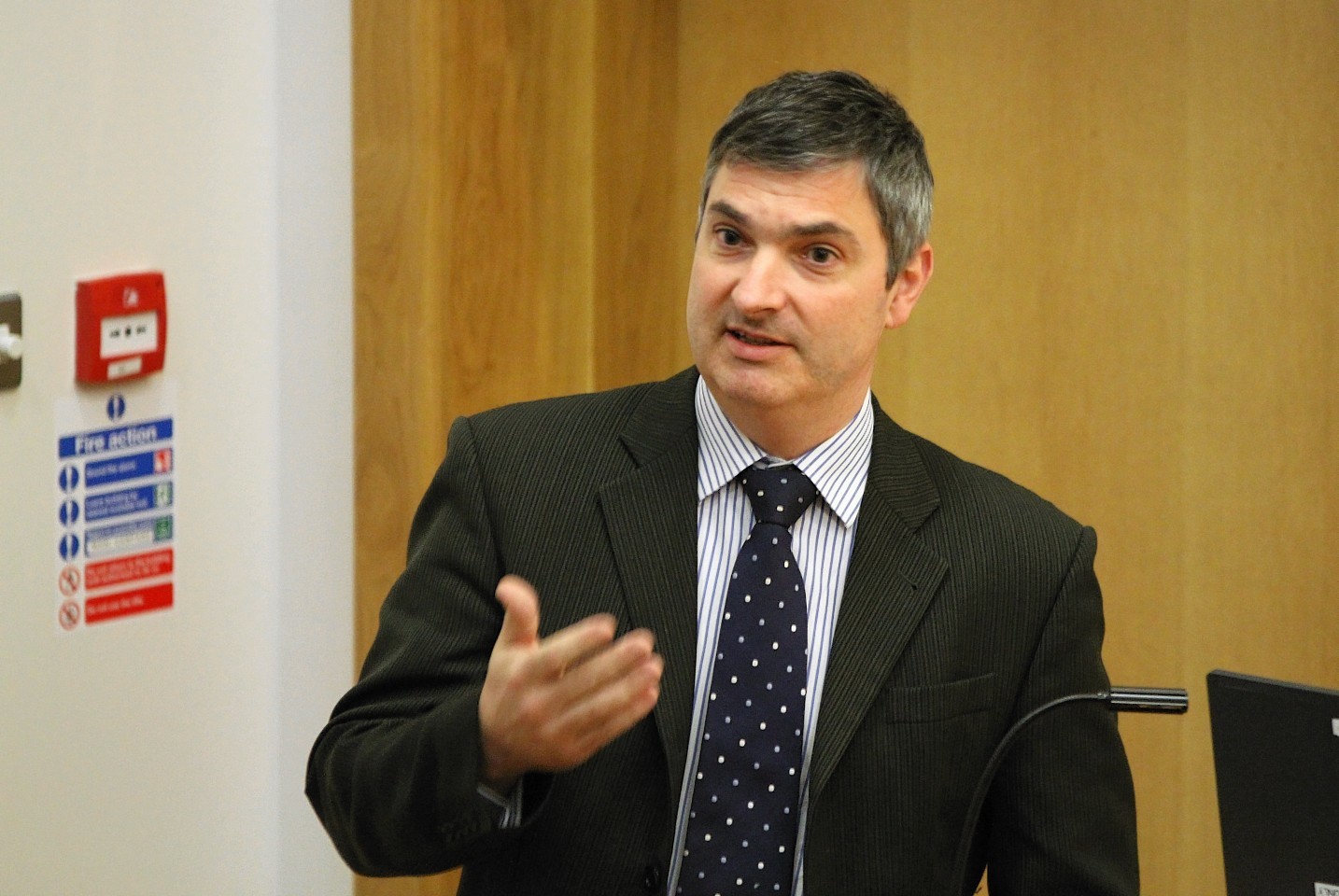Farmers could face a cut of up to 50% to the historic element of their base payment next year, according to the government’s chief agricultural officer Drew Sloan.
Addressing a packed auction ring at the Thainstone Centre, Inverurie, on Tuesday night where around 500 farmers were in attendance at a government Cap roadshow meeting, Mr Sloan provided an example of how the transition from historic to area-based payments from 2015 will affect farmers.
He said the basic payment in the first year – 2015 – would be worked out based on the number of hectares claimed by a farmer in either 2013 or 2015 (whichever was the lesser amount), while the total value for the historic element would be based on a fixed percentage of the current Single Farm Payment entitlements held by a farmer this year.
For example, using the so-called 2013/15 rule, if a farmer claimed on 500 hectares in 2013 and 400 hectares in 2015, his entitlements under the new Basic Payment Scheme would be spread across the lesser area of 400 hectares.
Mr Sloan said farmers needed to be aware that the value would be assigned to the landowner, and not the person leasing any land.
He suggested the fixed value of the historic element of the entitlement could be 50%, although this will not be known until 2015 once all applications are in, meaning a farmer currently holding entitlements worth £100,000 would have these cut to £50,000.
If the producer held 400 hectares, the basic payment in 2015 would be around £125 per hectare.
Thereafter farmers would see their base payments change each year until 2019 to bring everyone on to a level playing field with similar payments.
Mr Sloan said farmers would receive more though as a result of the greening payments, and for some top-up payments from the National Reserve and voluntary coupled support
He added that the 2013/15 rule may need to be revisited as European officials had indicated they were not happy with it.
Joining Mr Sloan to try to explain the new Cap to north-east farmers was the government’s head of agricultural development Ian Davidson, who provided an indication of the level of payments farmers will receive following the full transition to area payments by 2019.
The Scottish Government has chosen to split the country’s farmland into three region – Region 1 comprises around 4.4million acres of arable and permanent grassland; Region 2 comprises around 2.47million acres of rough grazing in LFASS categories B, C and D; and Region 3 comprises around 4.94million acres of rough grazing in LFASS category A or land without a grazing category.
Mr Davidson said by 2019, the basic payment for the regions was expected to be around £118 per hectare in Region 1, £20 per hectare in Region 2 and £5.60 per hectare in Region 3. He said the associated greening payments by 2019 would be around £60 per hectare in Region 1, £11 per hectare in Region 2 and £2.40 per hectare in Region 3. This means that the likely combined basic and greening payment for farmers by 2019 will be £178 per hectare in Region 1, £31 per hectare in Region 2 and £8 per hectare in Region 3.
Mr Davidson said all farmers who apply for subsidy support under the new Basic Payment Scheme (BPS) must ensure they are compliant with greening rules, and by 2017 those who fail to comply were likely to incur a penalty which will impact on their base payment.
Both Mr Davidson and Mr Sloan urged farmers and crofters to carefully scrutinise the letter they had received from government outlining what payment region their land has been put into.
The civil servants said ensuring the “regions were locked down” was vital to ensuring payments flowed to farmers next year.
